The fauna of the area which would later become the Messel pit was quite rich in crocs. Some of them strongly resembled modern crocodylians, but some of them were oddballs which differed strongly from any extant species.

The biggest crocodylian of Messsel was Asiatosuchus germanicus, a species which is known from skulls (including the mandible length) up to about 68 cm in length. The total length was up to about 3,5-4 m, about the size of an average American alligator. The very broad and robust jaws also resemble those of an alligator, and it is likely that Asiatosuchus had a similar ecology.
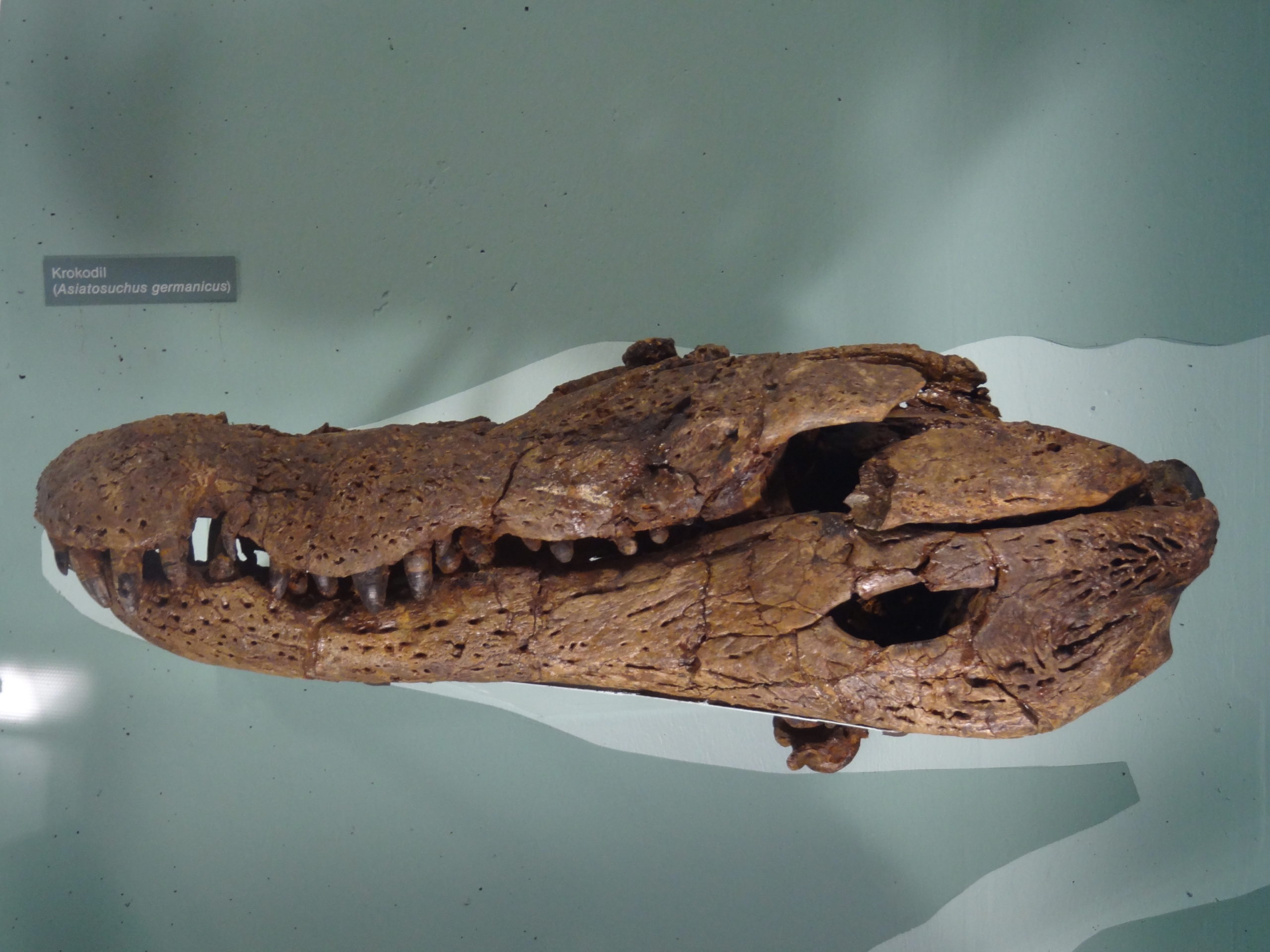
Asiatosuchus was also the largest animal found in the Messel pit and also the largest carnivore. In contrast to most of the fossils from the lake sediments which had to be transfered from the surounding matrix into an expoy-layer during a complex process, some of the larger croc fossils were massive enough to prep the bones completely out of the oil-shale.

Here is the partially preserved postcranial skeleton:

The other Messel crocs were considerably smaller. Diplocynodon darwini for example, an alligatoroid, reached only lengths of about 1,5 m.

This species is knwon from many very well preserved skeletons.
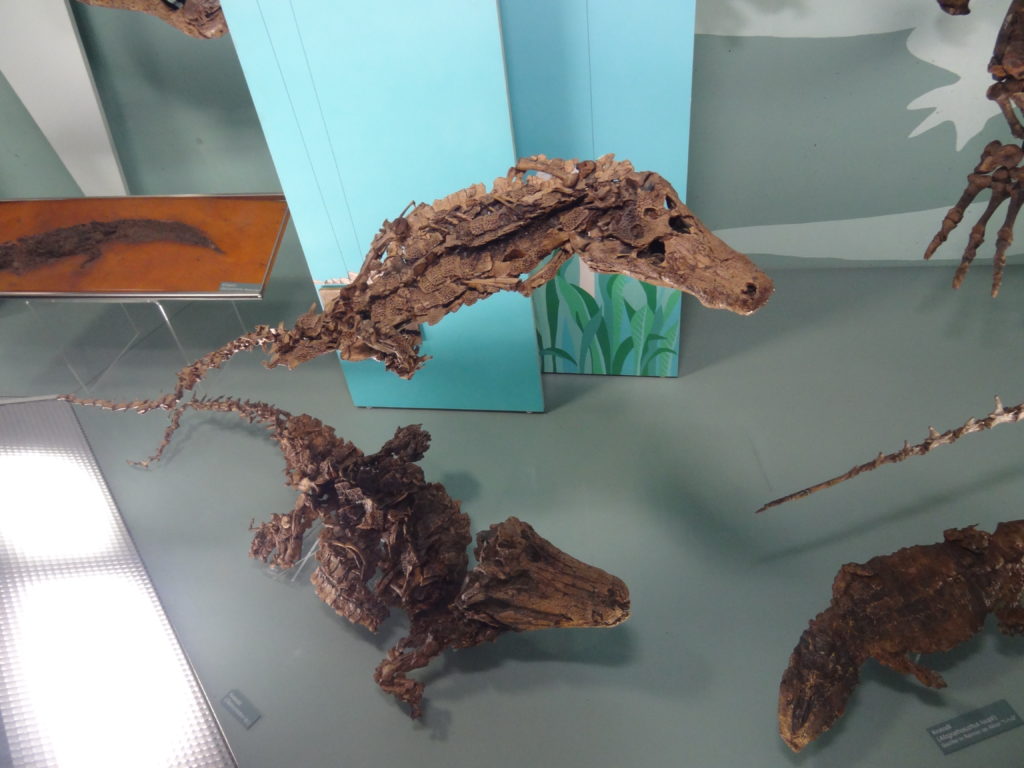
Even tiny hatchlings were preserved.
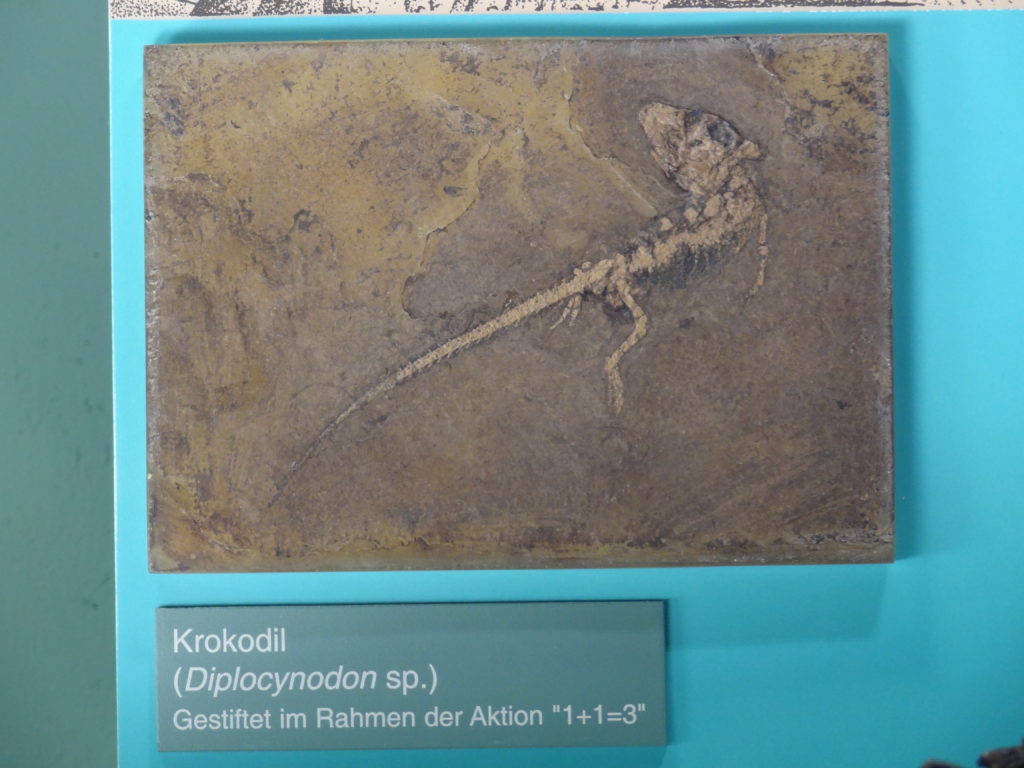
Another small diplocynodontine crocodylians was Diplocynodon deponiaa (formerly Baryphracta deponia). Sadly the only photo I took was rather bad in quality, but at least you can still see one of the most noticeable traits of this species, its very well developed osteoderms:

Those crocodylians were all comparably similar to some of our modern species. But there were also very distinct forms which have no ecological equivapents today. One of them was the alligatorine Hassiacosuchus haupti (formerly Allognathosuchus haupti). This was a also a rather small animal which only grew to about 1,5 m. It had an extremely shortend snout and wide blunt mushroom-shaped teeth in the posterior part of its jaws. This indicates a certain specialization for small hard prey animals like snails, crabs or small turtles.
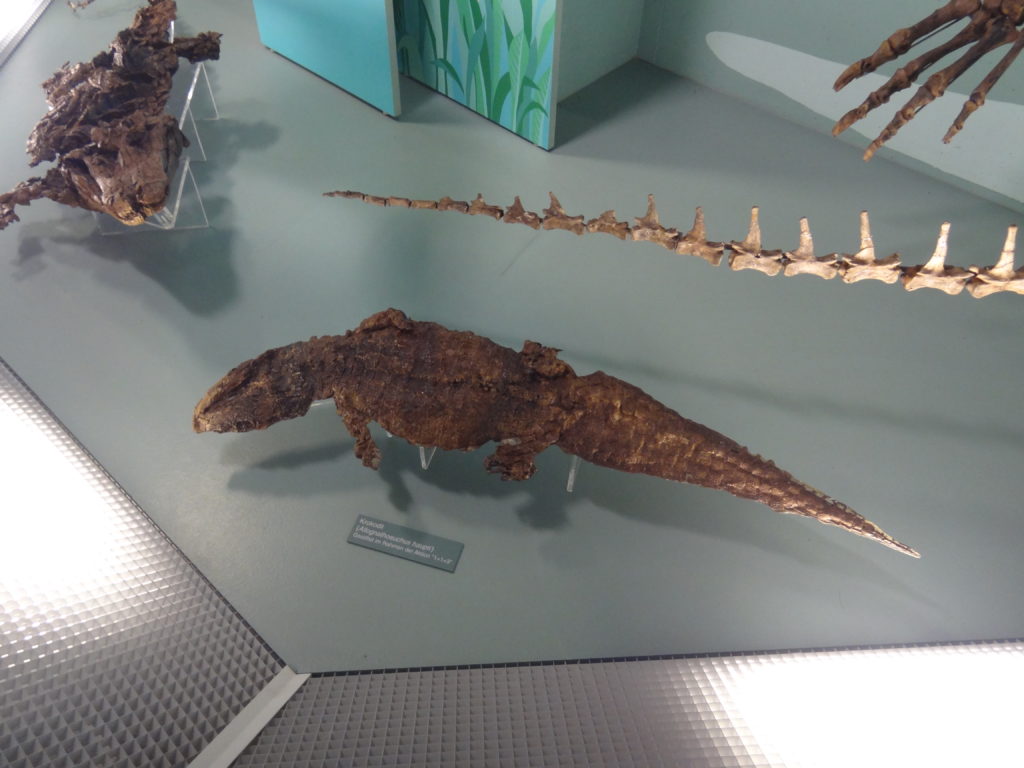
The coolest Messel-croc is sadly only known from very fragmentary remains, a partial mandible and a partial skull (which was sadly not on exhibit) of a single specimen found in the shales. It was Bergisuchus dietrichbergi, a small sebecosuchian. This lineage of crocodyliforms is especially well known from South America, where they evolved a big diversity with some particularly large species. This animals were totally unlike any modern crocodylians and resembled to some degree the large predatory archosaurs from the Triassic like Batrachotomus. They were fully terrestrial and agile and long-legged hunters. Their deep jaws had laterally flattened teeth with sharp serrated edges like those of theropod dinosaurs, but with a pair of enlarge canine-like teeth in the mandible. This animals are very little known and hardly ever mentioned even in paleontology books, but for millions of years those animals were among the dominant terrestrial predators in many parts of the world.
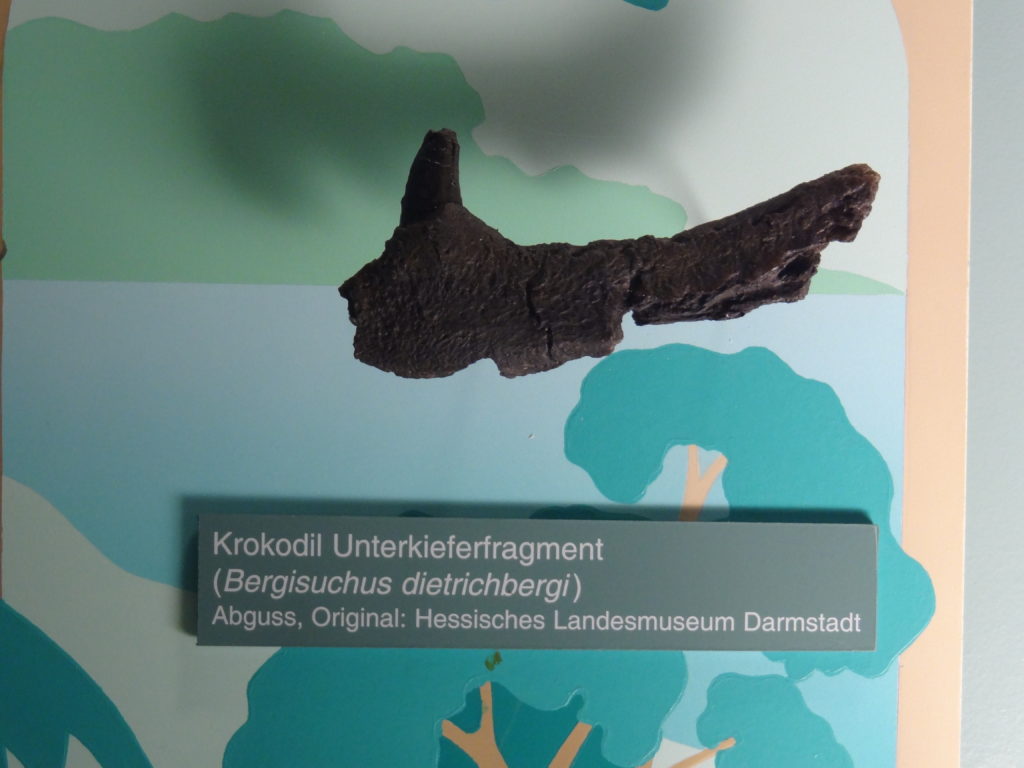
Bergisuchus was not even the only terrestrial croc of Messel. Another species, originally described as Pristichampsus rollinanti but now dedicated to Boverisuchus is also known from this site, sadly only from extremely fragmentary remains, without any specimens in the exhibition. Here is a speed painting by Joschua Knüppe of Boverisuchus.
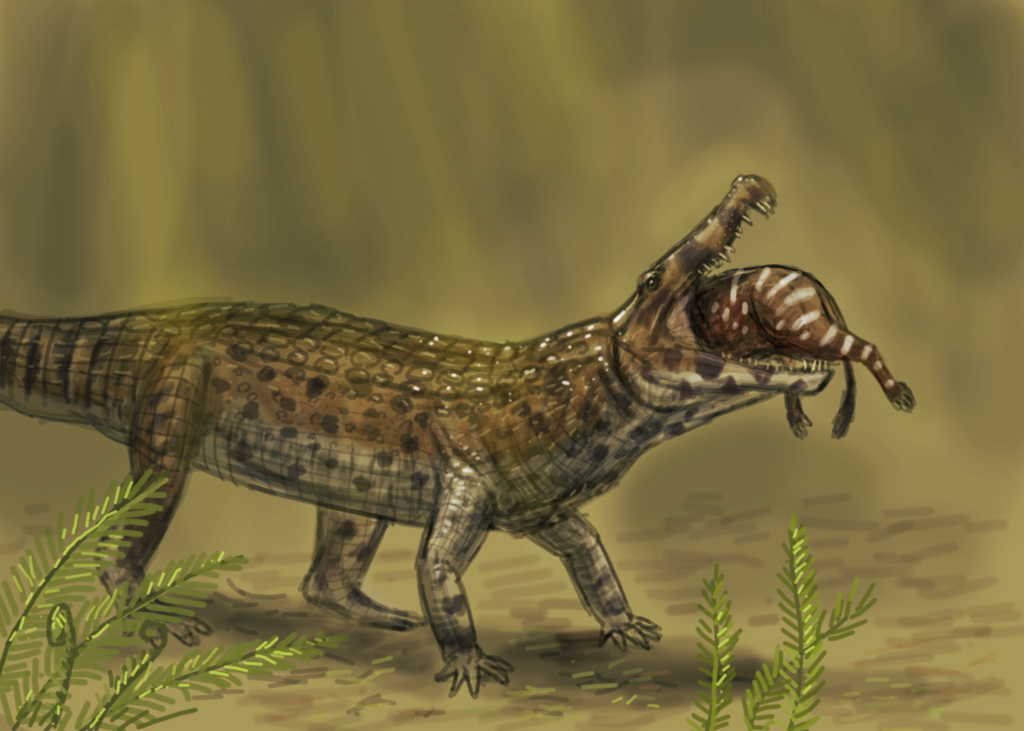
This animals had lesser deep jaws than the sebecosuchuians but shared with them the ziphodont meat-slicing dentition. Boverisuchus reached lengths of up to 3 m, but to the usually rather small mammals of the Messel-fauna they must have appeared like huge monsters.
In the next part I will cover the other reptiles from the exhibition.
